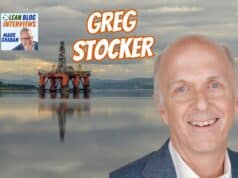Thanks, as always, to Ryan McCormack for this. He always shares so much good reading, listening, and viewing here! Subscribe to get these directly from Ryan via email.
News, articles, books, podcasts, and videos about how to make the workplace better.
Operational Excellence, Improvement, and Innovation
The Problem With Improvement Projects
Most organizational improvement is done through projects. Most project teams will acknowledge that sustaining gains made during the project is one of the biggest challenges. So why do we continue the cycle?
Donald Wheeler, author of the improvement classic Understanding Variation: The Key to Managing Chaos, explains how the assumptions behind projects and experiments inevitably lead to slippage, and continuous improvement supported by process behaviour charts in a production setting will yield more sustainable improvements over time.
But, we'll probably still keep doing projects, because who has the time to improve the work while it's happening? It's still likely that the search for silver bullets will continue at most organizations rather than embrace improvement as a way of working. The cycle continues…
Toyota Shows That Kaizen With Suppliers Delivers Mutual Benefits, Yet Many Are Still Reluctant
Toyota (and Deming) has long understood the value in developing deep relationships with suppliers that extends to sharing in the mutual benefits of kaizen. Toyota shares the details of a Group Collaborative Activity with Umemura Industry, a supplier of automotive interior trim, that made material handling safer and more efficient, improved operational availability of equipment, and halving product and material inventories. Through these activities, Toyota ensures that the benefits gained become assets of the supplier.
So, other suppliers must be lining up to be next to collaborate and improve right? Not so. Despite the results, Toyota Production System (TPS) principles and methods are still viewed as too much effort by other organizations. One participant acknowledges the hurdles of greater adoption, “when you try TPS, you understand the benefits. But we can't shake the image that it is just an added difficulty… that's the problem. It would be nice if people could clearly understand the value in advance, but the hard part is you have to try it for yourself.”
5 Practices to Adopt to Unlock Greater Productivity
Productivity continues to lag, and while most organizations are relying on AI and technology to achieve productivity nirvana, there are plenty of fundamental operational and managerial practices that can be adopted to drive better performance. McKinsey's latest Operational Excellence Survey reveals 5 practices to jump-start improving performance.
Creating a Culture of Improvement
Well, That's One Way to Get Alignment: NVidia CEO Has 60 Direct Reports and No 1:1s
Alignment to purpose and strategy is a perennial challenge at large organizations with the opportunity for things to get lost in translation across all the levels of sometimes self-interested leaders. Most resort to scorecards, incentives, and a ton of communication when attempting to get leaders to row in the same direction. A lot has been written this year about how Nvidia's CEO Jensen Huang has 60 direct reports and no 1:1 meetings as a way to gain alignment, expecting executives to receive and learn from mass communications and coaching. I'm not sure this is advisable or scalable at most organizations, but it will certainly establish a results-oriented culture!
Avoid the Agility Trap. Seek Strategic Constants.
Over the last 15 years, organizations have been obsessed with agility and adapting to ever-increasing market changes. The “adapt or die” mindset is useful, but over-indexing on agility can cause organizations to abandon their core competencies and over-diversify, leaving them competitively thinner and plunging their organization into chaos. Being agile shouldn't mean changing your strategy and purpose with every market vibration.
The key? Focus on strategic constant to avoid the agility trap. Jeff Bezos famously remarked “I very frequently get the question: ‘What's going to change in the next 10 years?'… I almost never get the question: ‘What's not going to change in the next 10 years?' And I submit to you that that second question is actually the more important of the two–because you can build a business strategy around the things that are stable in time.” No one accuses Amazon of ignoring agility, rather they focus on making its operations increasingly responsive while maintaining constancy on fulfilment.
Deming prescribed constancy of purpose- to maintain focus and alignment on the strategic imperatives that don't change over the long-term. In Out of the Crisis, Deming reminds us that “problems of the future command first and foremost constancy of purpose and dedication to improvement of competitive position to keep the company alive and to provide jobs for their employees.” As per the HBR article,
“In a rapidly changing environment, companies should establish a firm and consistent strategic foundation rooted in enduring factors while maintaining the flexibility to adapt when necessary.”
Tiered Huddles – The Cleveland Clinic
Hospital systems are complex and high-stakes. After years of soliciting input from care providers, I can say with confidence that communication is often cited as the biggest opportunity for improvement at hospitals. How can hospitals bring authority to information without bogging down the entire organization? Tiered huddle systems provide an elegant and efficient way to share and raise risks from the bedside to every level of the organization.
Years ago, I worked to implement a 3 tiered huddle system at a tertiary hospital, adn I can confirm it requires a lot of discipline, standardization, and change management to be effective at scale. Which is why I was deeply impressed to learn more about The Cleveland Clinic's 6 tiered huddle system that connects the bedside to the C-suite for their hospital system every day, Monday to Friday on Connecting the Dots podcast. What makes it even more impressive is that The Cleveland Clinic has over 48,000 employees and has been continually improving its communication system for over 7 years!
Coaching – Developing Self & Others
Do. Be. Do. Be.
Want to improve? Do the work. Learn from the work. Michael Bungay-Stanier distills a lifetime of coaching into a few hundred words in How to Get Better.
You Could Use a Checklist. No, Really. You Should.
I know, I know. You're a craftsperson. Your work is too complex and nuanced to benefit from something as simple as a checklist. It's not rocket science. In fact it must be more complex, because pilots, surgeons, and actual rocket scientists use checklists to make safer and smarter decisions.
Don't assume you're too special to benefit from the most basic tools. The simple checklist remains the most versatile tool to help you work smarter and safer.
Follow Ryan & Subscribe:
LinkedIn: https://www.linkedin.com/in/rjmccormack/
Subscribe to receive these via email
Please scroll down (or click) to post a comment. Connect with me on LinkedIn.
Let’s build a culture of continuous improvement and psychological safety—together. If you're a leader aiming for lasting change (not just more projects), I help organizations:
- Engage people at all levels in sustainable improvement
- Shift from fear of mistakes to learning from them
- Apply Lean thinking in practical, people-centered ways
Interested in coaching or a keynote talk? Let’s talk.
Join me for a Lean Healthcare Accelerator Trip to Japan! Learn More









